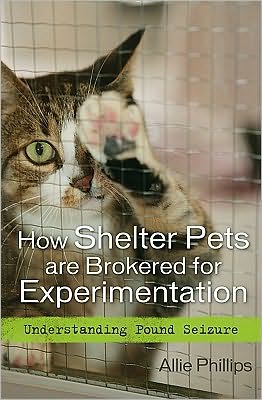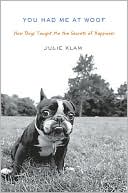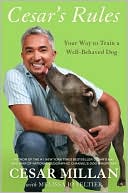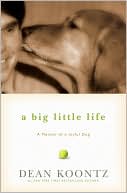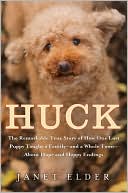How Shelter Pets are Brokered for Experimentation: Understanding Pound Seizure
Back in the 1940s, the practice referred to as 'pound seizure' became a common practice in taxpayer-funded animal shelters across the country. Whether for cosmetic testing, human or animal drug testing, medical technique and tool testing, or biochemical testing, these once-family pets are subjected to experimentation that often ends in death. While many states fail to keep accurate data, the number of pets that become victims of pound seizure easily reaches the thousands and though most...
Search in google:
Pound seizure or pound release involves a shelter selling or giving away cats and dogs to research facilities, universities, or Class B Dealers (random source animal brokers licensed by the U.S. Department of Agriculture) to be used for experimentation that often ends in death. This book offers an overview of the problem of pound seizure, and its history, and provides practical tips for how anyone can become an advocate to end pound seizure in their community, while protecting oneself from legal attacks from Class B Dealers and the research community. With personal stories, firsthand accounts, and vivid examples, the author relays the seamier side of this practice and offers a plan for ending it. Publishers Weekly When Phillips, who had once worked as a volunteer at an animal shelter, learned of the practice of pound seizure, she turned a "betrayal of trust" into action. As vice president of No Paws Left Behind and director of public policy at the American Humane Association, the former prosecutor has made it her mission to expose and fight the practice of shelter's giving or selling cats and dogs to research facilities, universities, or Class B Dealers (animal brokers licensed by the U.S. Department of Agriculture). Extensive research and expert opinion result is a thorough history of a little known practice "often intertwined with the legitimacy of medical research." Phillips outlines some of the ways in which seized animals can be used for research, including "the testing of medical techniques (surgical techniques or medical tools), pharmaceutical testing (human and animal drugs), blood banking for other animals, cosmetic, industrial, and biochemical." Though many organizations are phasing out the use of such testing, these sections are still disturbing. Taking readers methodically through the facts of the issue, Phillips hopes to not only create awareness but also advocacy, and provides a bounty of practical resources for anyone who wants to take action. Copyright © Reed Business Information, a division of Reed Elsevier Inc. All rights reserved.
DedicationAcknowledgmentsPart I DISCOVERING THE SECRET1 Introduction 32 What is Pound Seizure? 113 Laws and Legislation on Pound Seizure 214 Betrayal of Trust 39Part II THE FACES OF POUND SEIZURE5 Exposing Dealers Who Violate the Law 596 Experiments Conducted on Shelter Cats and Dogs 697 Alternatives to Animals in Research and Education 918 The Victims and Survivors of Pound Seizure and Pet Theft 999 The Voices of the Research and Educational Communities on Random Source Cats and Dogs 11110 Shelters and Pound Seizure 12511 Voices of the Advocates to Stop Pound Seizure 135Part III TAKING ACTION12 Lawsuits, Threats, and Intimidation 16513 Effective Advocacy Techniques 17314 Conclusion 185APPENDIXESAppendix A Laws 189Appendix B Federal and Michigan Pound Seizure Bills 193Appendix C PCRM Medical School Charts 210Notes 213Bibliography 225Index 231About the Author 237
\ Publishers WeeklyWhen Phillips, who had once worked as a volunteer at an animal shelter, learned of the practice of pound seizure, she turned a "betrayal of trust" into action. As vice president of No Paws Left Behind and director of public policy at the American Humane Association, the former prosecutor has made it her mission to expose and fight the practice of shelter's giving or selling cats and dogs to research facilities, universities, or Class B Dealers (animal brokers licensed by the U.S. Department of Agriculture). Extensive research and expert opinion result is a thorough history of a little known practice "often intertwined with the legitimacy of medical research." Phillips outlines some of the ways in which seized animals can be used for research, including "the testing of medical techniques (surgical techniques or medical tools), pharmaceutical testing (human and animal drugs), blood banking for other animals, cosmetic, industrial, and biochemical." Though many organizations are phasing out the use of such testing, these sections are still disturbing. Taking readers methodically through the facts of the issue, Phillips hopes to not only create awareness but also advocacy, and provides a bounty of practical resources for anyone who wants to take action. \ Copyright © Reed Business Information, a division of Reed Elsevier Inc. All rights reserved.\ \ \ \ \ Beatrice M. FriedlanderThis is not an easy book to read, but it is a necessary one, and Allie Phillips is uniquely qualified to tell the story of "America's Dirty Little Secret." Allie takes her own wrenching experiences with pound seizure and applies her legal background to present the definitive volume, from the law, policy and legislation, to the science and personal stories-and more-about the animals and people caught up in this world.\ \ \ Animal PeopleBy far the best researched report on pound seizure to appear between book covers.\ \ \ \ \ American Association For Laboratory Animal ScienceThe target audience of this book is the lay public. However, laboratory animal professionals, administrators, and scientists would be well served to read it in order to better understand the public's perception regarding the use of shelter dogs and cats in research.\ \
